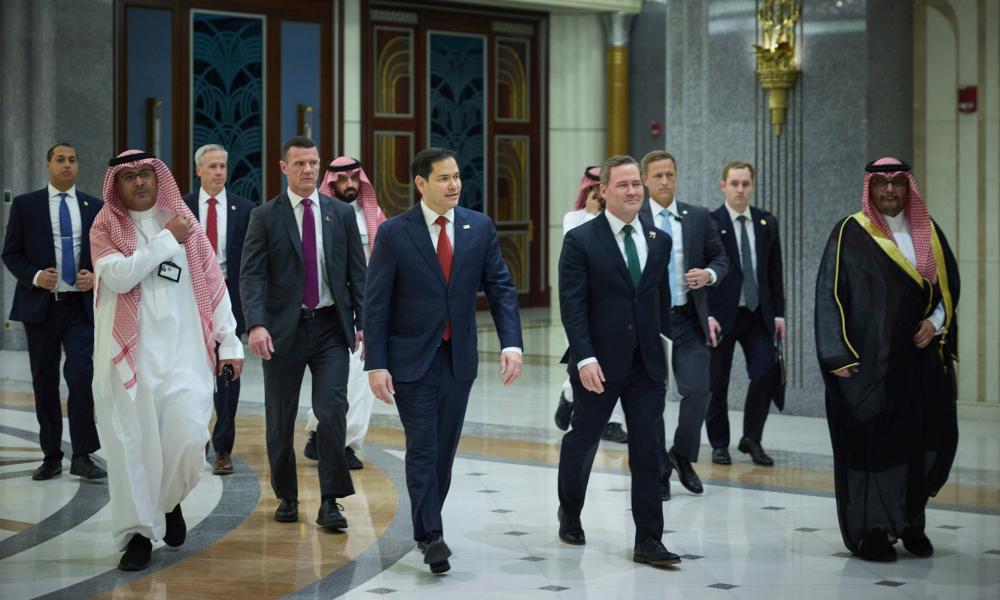
Published 26/03/2025 17:15
The United States announced on Tuesday (25) two parallel ceasefrees between Russia and Ukraine: one in the Black Sea and one in the attacks on energy infrastructure. Negotiations resulted in commitments to ensure safe navigation in the Black Sea, prohibit the use of strength and prevent the militarization of commercial vessels. Ukraine also agreed to suspend attacks on Russian energy infrastructure, while Moscow has pledged not to reach Ukrainian refineries, pipelines and electrical plants for 30 days, extendable. The measure aims to ensure the safety of commercial navigation in the region and mitigate damage to civilian populations achieved by recent attacks on critical infrastructures.
The negotiations took place in Riyadh, Saudi Arabia, where delegations from the three countries have had conversations since last Sunday (23). Despite the advancement, Kremlin has conditioned the implementation of the agreement on the suspension of western sanctions on Russian banks and the release of food and fertilizer exports. Ukrainian President Volodymyr Zelensky has required guarantees that any Russian violation will bring new sanctions and weapons sending the US.
The Black Sea: a field mine for the agreement
The Black Sea is a symbolic and economic epicenter of the conflict: it houses the crime annexed by Russia, the besieged Mariupol and vital routes for agricultural exports. The agreement resumes failed terms of 2022, when Moscow abandoned the “Black Sea Grain Initiative”, aggravating the global food crisis.
The region has been strategic since the beginning of the war. Crimea, annexed by Russia in 2014, controls vital sea routes for the export of Ukrainian grains. In 2022, Mariupol, a port city in the Black Sea, was destroyed and occupied, interrupting the commercial flow. The new agreement revives terms of a 2022 pact, broken by Moscow in 2023, which allowed safe ships.
For Ukraine, the truce can revitalize the economy as long as ports like Odessa operate without risk. Russia seeks to normalize exports, harmed by sanctions. However, Ukrainian Minister Rustem Umarov warned that any movement of Russian ships besides east of the Black Sea will be seen as a violation, justifying retaliation.
Despite the formal commitment, the history of tension between the two countries raises doubts about the longevity of the agreement.
Energy as a weapon of war
Attacks to energy infrastructures became a central tactic in 2024, leaving millions without warming in the middle of winter. According to European press, Russia aims to destabilize Ukrainian cities by cutting energy, while Ukraine reaches Russian refineries to press economically. The ceasefire, valid since March 18, excludes civil facilities.
Volodymyr Zelensky has confirmed the immediate interruption of Ukrainian attacks on Russian refineries – recent drones targets – but stressed: “civil infrastructure is not included”, keeping the door open to retaliate cities. Kremlin, in turn, requires “clear guarantees” that Washington will force Kiev to comply with the pact. It requires warranties to go from Washington, not just Kiev, reflecting mutual distrust. “With no clear orders from Trump to Zelensky, there is no way to trust,” said Russian chancellor Sergei Lavrov.
Lack of mutual confidence between Moscow and Kiev means that any small incident can trigger a resumption of hostilities. One of the main concerns is the possibility of accusations of “fake flag attacks,” in which one party simulates an aggression to justify retaliation in “self -defense.” Both sides are interested in portraying the enemy as an aggressor to justify ruptures. In addition, Zelensky said he will seek more sanctions against Moscow if the Russians fail to comply with the agreements.
The fragility of the agreement lies in the lack of inspection mechanisms. Ukraine has asked other countries to monitor Russian movements, but there are no details on how this will happen. In addition, the history of violations is vast: by 2023, Russia unilaterally abandoned the grain agreement, alleging western restrictions.
The role of the US: between mediation and interests
American mediation seeks to contain climbing, but its promises differ: to the Russians, it offers facilitating agricultural exports; to Ukrainians, support in prisoners and weapons. However, the White House avoided detailing the terms, feeding speculation on unlavoded counterparts. The US should benefit widely from Ukraine’s mineral resources in contracts that are already being negotiated.
The White House promised to assist Kiev in prisoners’ exchanges and deported children repatriation, while Moscow received vacancies of commercial relief. It consolidates the role of global mediator and relieve inflationary pressures, one of the main elements of disapproval to the Trump administration.
Trump, who minimized the leakage of recent military plans, said the ceasefire is an “initial step.” However, his sympathy for Putin and NATO criticism generates skepticism in Europe, especially at a time when the transatlantic alliance already faces tensions.
Possibility of expansion for a broader ceasefire
The ceasefire in the Black Sea is a fragile relief in a war of wear. Temporary relief in a conflict that already lasts two years. Although the economic interests on both sides – Russian exports and Ukrainian grains – create incentives for cooperation, historical distrust, and the absence of binding guarantees make the covenant vulnerable.
Despite uncertainties, this agreement may represent a first step for broader peace negotiations. Stabilization of the Black Sea region is vital to both global food security, given the export of Ukrainian grains and for the strategic balance between the powers involved.
For Zelensky, the deal is a tactical victory: “It shows that Russia needs to negotiate.” For Putin, it is a pause to recompose troops and press for economic relief.
The truce, therefore, is less an end in itself and another test for future negotiations. In order for the truce to become a lasting ceasefire, both parties will need to demonstrate more disposition to dialogue and overcome the historical distrust that permeates the conflict. Meanwhile, Ukrainian civilians continue paying the price of a war that, even with breaks, has no date yet to end.
Source: vermelho.org.br

